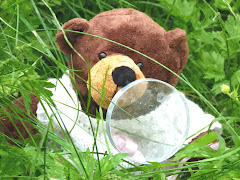Monday 28 October 2013
The trouble with sea foam
Hi all
When I was at the marine educator’s conference in Plymouth back in early September I
learned about sea foam from a group of scientists studying this in the English
Channel and North Sea. While the foam looks like an over spill from a washing
machine, it’s not from washing powder. The foam can be a sign of damage being
caused to the oceans, by due to human activities, called Eutrophication (big
word!). While nutrients are vitally essential for the marine environment (its
food for many animals and plants), it is thought that the natural amount of
nutrients in the water is often dramatically increased by human activities.
The most common nutrients causing eutrophication are
nitrogen and phosphorus and these enter rivers and the ocean from water run-off
from agricultural land from industry and, from households, including
phosphorus-based detergents.
The scientist said algae (plant plankton) are a vital part
of marine food webs and algae need nutrients to grow but when there is too high
a level of these nutrients it can cause an algal bloom. This means the algae multiply
in vast numbers to feed on the extra nutrients. The algae die and they are eaten by bacteria. This
sounds good so far. But the problem is
that the bacteria use up lots of oxygen which means the animals living on the
seabed might not get any oxygen to breathe. That sounds a huge problem!
When it is stormy the dead remains of the algae are stirred
up by the waves and the wind making foam. I was very concerned to find that we
had a lot of sea foam on Brighton Beach and also on my beach at Shoreham. The
pebbles were covered in a blanket of white.
I have contacted the scientists about our beach foam and I
am waiting to find out if they think it happened because of eutrophication. The
scientists monitor the sea using satellites that can see the algae blooms. I
will let you know if I find out more.
Bye for now
Ed the Bear
Subscribe to:
Posts (Atom)







